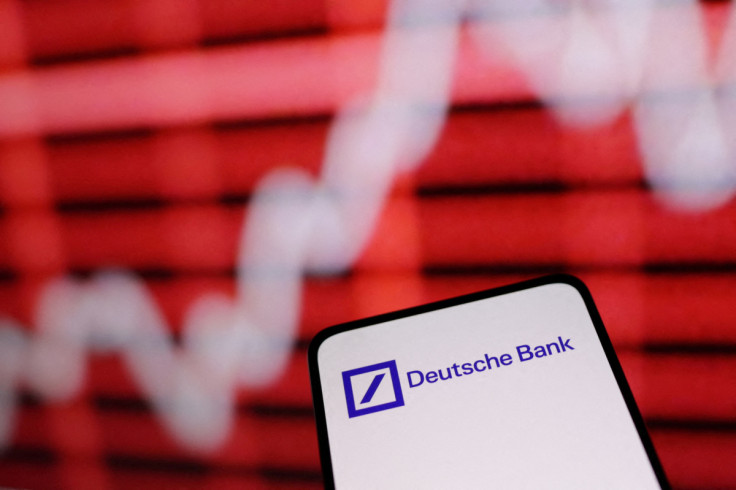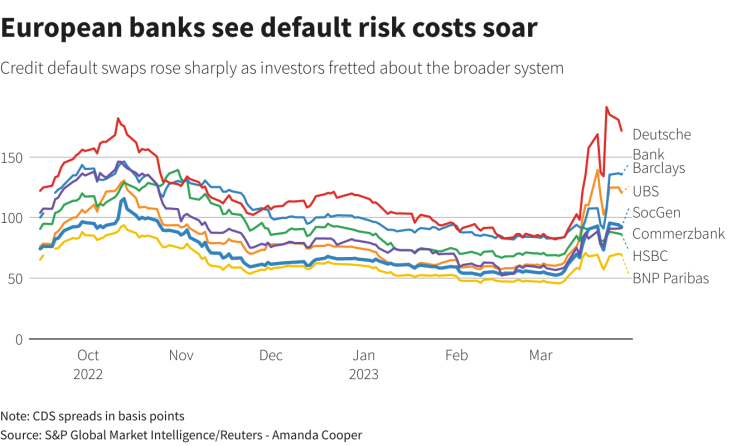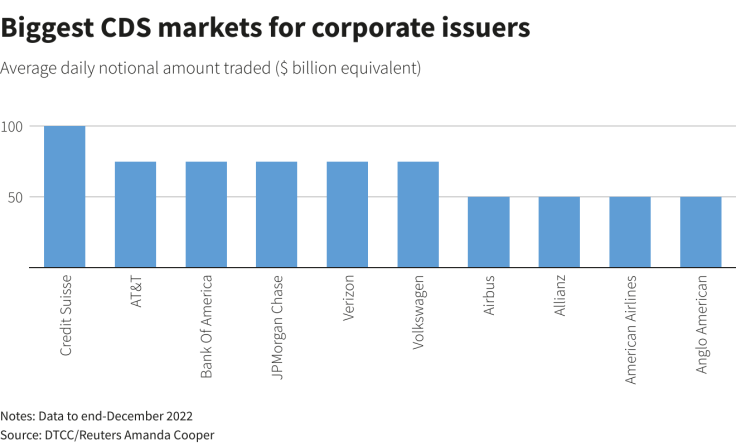Explainer-What Are Credit Default Swaps And Why Are They Causing Trouble For Europe's Banks?

Turbulence in Europe's banks following the implosion of 167-year-old Credit Suisse and runs on regional banks in the U.S. has focused attention on the role played by credit default swaps in all the turmoil.
Investors, worried about which bank might be next, have hammered the shares and bonds of some of Europe's best known banking names, including Deutsche Bank, Germany's biggest lender.
The moves followed a surge in the cost of insuring Deutsche Bank's debt against default via credit default swaps (CDS) to a more than four-year high last week.
Andrea Enria, the banking supervisory chief at the European Central Bank, highlighted the volatility in Deutsche Bank's securities - including CDS - as a worrying sign of how easily investors could be spooked.
"There are markets like the single-name CDS market which are very opaque, very shallow and very illiquid, and with a few million (euros) the fear spreads to the trillion-euro-assets banks and contaminates stock prices and also deposit outflows."
European banks see default risk costs soar,

WHAT IS A CDS ANYWAY?
Credit default swaps are derivatives that offer insurance against the risk of a bond issuer - such as a company, a bank or a sovereign government - not paying their creditors.
Bond investors hope to receive interest on their bonds and their money back when the bond matures. But they have no guarantee either of these things will happen and so have to bear the risk of holding that debt.
CDS help to mitigate the risk by providing a form of insurance.
The CDS market is worth around $3.8 trillion, according to the International Swaps and Derivatives Association. But the market is well below the $33 trillion of its heyday in 2008, based on ISDA data.
The CDS market is small relative to equities, foreign exchange or the global bond markets, where there are more than $120 trillion bonds outstanding. Average daily volume in foreign exchange is close to $8 trillion, based on Bank for International Settlements data.
Trading in these derivatives can be thin. The number of average daily CDS trades, even for large companies, can sometimes be in single digits, based on data from the Depositary Trust & Clearing Corporation (DTCC).
This makes the market tricky to navigate and creates a situation where even a small CDS trade can have an outsized price impact.
The rise and fall of credit default swaps,

WHO BUYS CDS?
Investors in bonds issued by companies, banks or governments can buy CDS insurance via an intermediary, often an investment bank, which finds a financial firm to issue an insurance policy on the bonds. These are "over-the-counter" deals which do not go through a central clearing house.
The buyer of the CDS will pay a fee on a regular basis to their counterparty, which then takes on the risk. In return, the seller of the CDS pays out a certain amount if something goes wrong, just like an insurance payout.
CDS are quoted as a credit spread, which is the number of basis points that the seller of the derivative charges the buyer for providing protection. The greater the perceived risk of a credit event, the wider that spread becomes.
The owner of a CDS quoted at 100 basis points would have to pay $1 to insure every $100 of bonds that they hold.
Biggest CDS markets for corporate issuers,

WHAT COULD TRIGGER CDS?
A CDS payout is triggered by a so-called credit event - which can include a bankruptcy of a debt issuer, or a failure to make a payment on bonds.
In 2014, a new category of credit event was introduced, so-called "Governmental Intervention", to address investor concerns that CDS would not cover measures taken by governments to support struggling entities, especially banks.
Like any financial asset, CDSs are actively traded. If the perception of risk increases around a debt issuer, demand for its CDS rises, widening the spread.
The biggest CDS market is for governments. Brazil tops the charts, with an daily notional average of $350 million trades each day, based on DTCC data.
Credit Suisse's CDSs were the most actively traded on the corporate front in the last quarter of 2022, with $100 million traded each day, DTCC data shows.
LEADING ROLE IN 2008 CRISIS
CDSs were one of the financial instruments at the centre of the 2008 financial crisis.
Bear Stearns and Lehman Brothers were among the many banks that issued CDS to investors on mortgage-backed securities (MBS) - mortgages bundled together into one package - among other types of derivative.
When U.S. interest rates rose sharply throughout 2007 this caused a wave of mortgage defaults, rendering billions of dollars in MBS and other bundled securities worthless. This triggered hefty CDS payouts for banks such as Lehman and Bear Stearns.
A REPEAT OF 2008?
No. A lot has changed since then. Many derivatives, including CDS, were far more widely used at that time and covered a broader range of assets, many of which went sour.
The current turmoil does not reflect a steep drop in the value of the securities that underlie the CDS. It is more the perception of risk, rather than actual risk.
In Deutsche Bank's case, CDS on its five-year debt rose above 200 bps last week from 85 bps just two weeks ago, as investors fretted about the stability of the broader European banking system.
The ECB's Enria argued that central clearing for CDS would improve transparency, reducing the risk of volatility.
"Having these type of markets centrally cleared rather than having OTC, opaque transactions ... would already be a big progress," he said.
© Copyright Thomson Reuters 2024. All rights reserved.




















